Lauingen on the Danube originated from an Alemannic settlement of the 6th/7th century. In the middle of the 8th century the village was donated to the monastery of Fulda and became Hohenstaufisch around 1150. The Hohenstaufers raised the village of Lauingen to the status of a town. Presumably Emperor Friedrich Barbarossa had it surrounded by walls. After the decapitation of the last Staufer, Konradins in Naples, Lauingen fell to the Wittelsbacher during the division of the Staufer estate.
(see also foundation of the Stams monastery)
The town played an important role in the period of the Reformation and the Thirty Years' War. After that it got its present face with beautiful gables on the main street, narrow streets and picturesque corners.
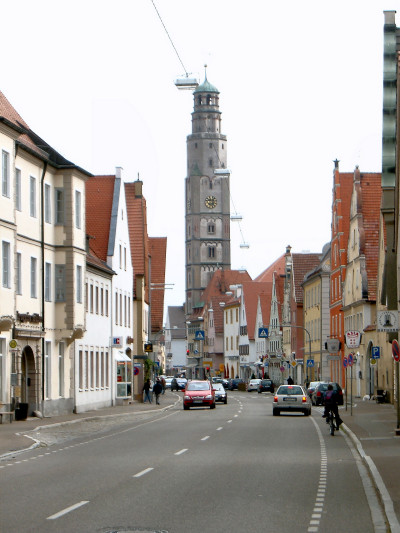
The high city tower (Schimmelturm) is visible from afar. The Danube cycle path leads here along the main road to the market place.
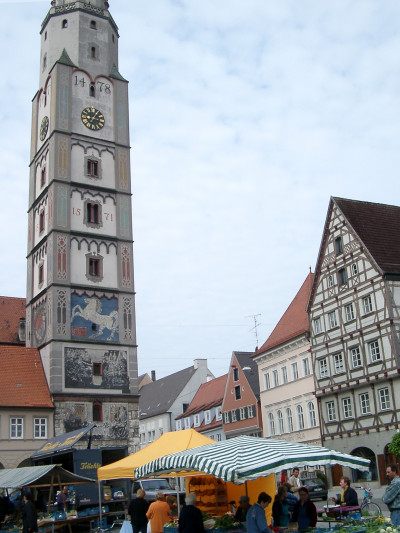
A special adornment of the Lauinger market place is the Schimmel- or Hofturm. It was built from 1457 to 1478 by order of a councilman. It was to serve as a watchtower and at the same time represent the civic pride of the people of Lauingen. The tower is about 54 m high. Roman ashlars from Fort Faimingen were used to build the foundations and the basement.
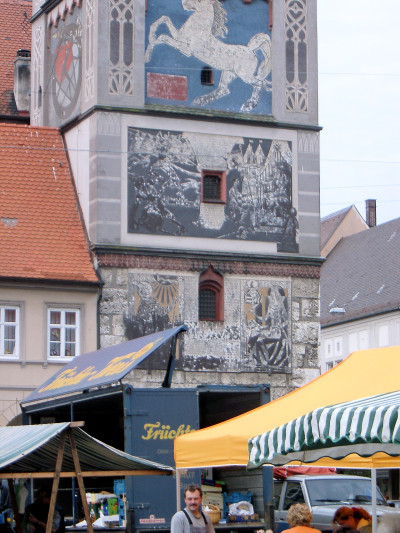
The tower was painted from the beginning. Depicted are:
1st floor: Albertus Magnus and the Countess Geiselina von Schwabeck
2nd floor: the scene of the awarding of the town coat of arms to a capable citizen of Lauingen
3rd floor: the mould that gave the tower its name
On the northern side on the second floor are the coats of arms of Lauingen, Swabia, Neuburg Palatinate, Dillingen County and the State of Bavaria.Attached to the Schimmelturm is the "Schupfe", a former shopping or market hall
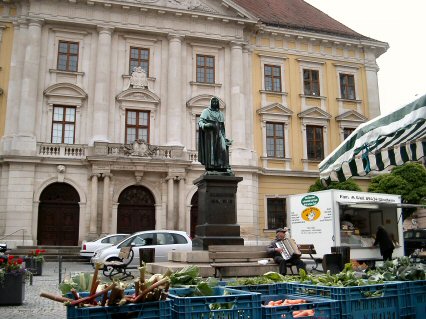
At the market place there is a monument of Albertus Magnus.
Albertus Magnus, the great scholar of the Middle Ages, is the most famous son of the city. He was born around 1200 in Lauingen. In 1225 he joined the Dominican Order, in 1260 he received the crosier in Regensburg. Albertus Magnus is considered the first scholar to combine Aristotle's philosophy with Christian teaching. His student Thomas Aquinas continued this work. In 1280 Albertus the Great died in Cologne. 1931 he was canonized.
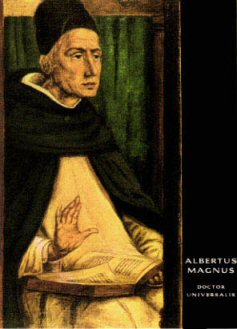
Albertus Magnus, a polymath, was a philosopher, lawyer, natural scientist and theologian at the same time. He was Dominican and bishop of Regensburg.
His great and versatile knowledge earned him the name Magnus (the Great), the title of church teacher and the honorary title doctor universalis. He knew the ancient and contemporary literature and wanted to capture the knowledge of his time completely and present it in textbooks in an understandable way. The more than 70 treatises and books would today add up to about 22,000 printed pages.
The most important consequence of his work is the foundation of Christian Aristotelics, and thus of higher scholasticism, and ultimately of modern science. Until Albertus' work, Aristotle's works were controversial in the Christian world because of their pagan origin. Albertus also strongly advocated the inclusion of Aristotle's works in the canon of Christian schools at the church political level.
In addition, some of his scientific works are regarded as groundbreaking in their respective scientific sectors, such as the first detailed description of Central European flora and fauna and his geographical descriptions. His work on mineralogy represents the first attempt to develop a complete system for minerals.
In an attempt to reconcile Aristotle's natural philosophical thinking with the Christian faith, he worked through all the knowledge of his time from theology, philosophy, medicine and the natural sciences, without, however, presenting it in a closed system; this was only achieved by his student Thomas Aquinas.


Danube cycle path